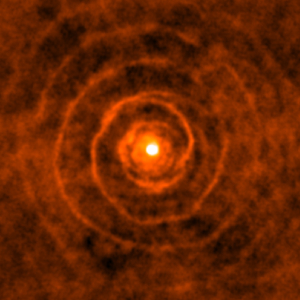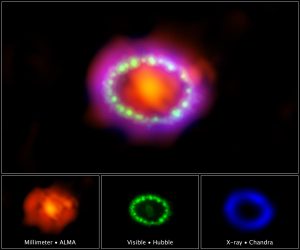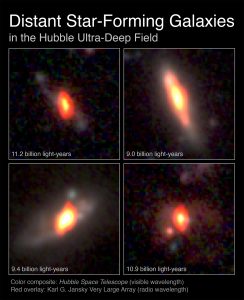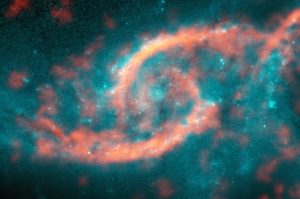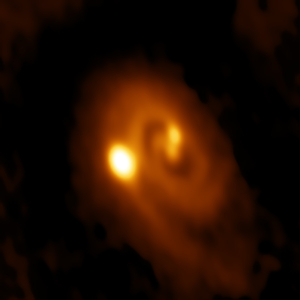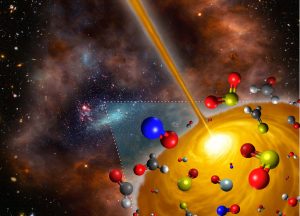LL Pegasi is an amazing celestial spiral.
The Dawn of a New Era for Supernova 1987A
30 years ago a star exploded… revisiting Supernova 1987A.
VLA, ALMA Team Up to Give First Look at Birthplaces of Most Current Stars
Astronomers have gotten their first look at exactly where most of today’s stars were born.
Tsunami of Stars and Gas Produces Dazzling Eye-shaped Feature in Galaxy
Glancing collision produces galactic “eyelids.”
Young Stellar System Caught in Act of Forming Close Multiples
For the first time, astronomers have seen a dusty disk of material around a young star fragmenting into a multiple-star system.
Stellar ‘Cocoon’ Seen for First Time Outside Our Galaxy
ALMA discovers a ‘hot molecular core’ in the Large Magellanic Cloud






